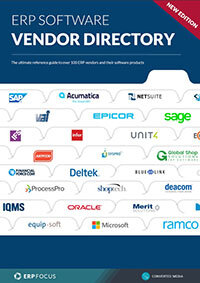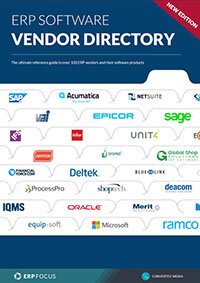Is There a Future for Wearable ERP Technology?
The title of this article is ‘Is There a Future for Wearable ERP Technology?’ Now, while this conjecture should lead to a fairly straightforward set of Q and A’s, the practical truth of its message is largely hidden within dense clouds of highly-subjective media buzz.
On the one hand, can wearable computing create a positive impact on ERP operations over time? The short answer is – yes. On the other hand, the development of some kind of commercial relevancy, in the near-term, is more likely to meander to and fro until the ERP market decides that it can’t stand it anymore; and finally give in to the power of ‘innovation for innovation’s sake.’
the development of some kind of commercial relevancy [for wearables], in the near-term, is more likely to meander to and fro until the ERP market decides that it can’t stand it anymore
Now, while I may appear to profess a philosophy driven by old-school thinking, supported by a gray dog’s nostalgic need for the ‘good old days’; the truth of my thinking is driven by revenue development and operational efficiencies. I have seen the ‘newer, bigger’ movie a time or two before, and while some of today’s more innovative technologies appear to be useful in an operational setting, such as 3D printing in the case of production, or tablet usage in administrative and management roles, I am not sure that wearing a set of Google glasses that enables a user to project data right in front of their eyeballs will make much of a significant difference on any enterprise’s bottom line.
Four Primary Wearable Technologies
Nevertheless, there are hosts of futurist ‘experts’ who suggest that both of these technologies and other in-development ‘wearable’ systems appear to offer something better than nothing.
In this category, there are four primary wearable ERP technology approaches that ‘may’ find themselves becoming relevant to operational ERP sooner rather than later.
In the first instance, body cams can (and probably should) find themselves on the manufacturing floor, since safety and time/motion efficiencies are always useful bits of tech, particularly if something goes wrong in the production process.
Recommended Reading: ERP Software RFP Guide - 15 pages of expert advice on the content and structure of an effective RFP
The next bit of innovation involves ‘smart watch’ systems. The ability to check off one or more production events, or accept or deny a process call can streamline man-in-the loop decision-making, thereby reducing time-to-complete on a number of processes.
The next evolution involves Near Field Communication (NFC)receivers in association with companion low-power iBeacons. These could easily make an impact when it comes to work efficiencies associated with ERP inventory management, production and/or warehouse processes. Again the value here is reduced time-to-completion in the case of one or more step-based production elements.
Along with the ‘wearable ERP technology’ category there is also the potential of a set of hybridized values somewhere between ‘wearables’ and ‘smart mobile devices’. The potentials here are primarily driven by active or passive signal/data transmitting, sets of congruent receiving systems, and/or types of event annunciations. For example, Japanese Airlines (JAL) recently began the process of integrating iBeacons with Smart Watch technology to actively geo-reference and track gate staff workers at Tokyo’s Haneda Airport. While this effort is still in its infancy, and remains to be fully-validated from an ERP perspective these kinds of sending/receiving/announcing capabilities could easily be translated to production, management and other process-driven elements.’
Free white paper

ERP Software Vendor Directory
Put the most comprehensive ERP vendor directory on your desk today

Related articles
-
![Mobile ERP case studies you can learn from [Image by javi indy on Freepik] Mobile ERP case studies you can learn from [Image by javi indy on Freepik]](/pictures/W1siZiIsIjIwMjQvMTAvMTYvejB2YnNremFyX01vYmlsZV9FUlBfY2FzZV9zdHVkaWVzX3lvdV9jYW5fbGVhcm5fZnJvbV9JbWFnZV9ieV9qYXZpX2luZHlfb25fRnJlZXBpa18uanBnIl0sWyJwIiwidGh1bWIiLCI0MDB4MjY2IyJdLFsicCIsImVuY29kZSIsImpwZyIsIi1xdWFsaXR5IDg1Il1d/Mobile%20ERP%20case%20studies%20you%20can%20learn%20from%20%5BImage%20by%20javi%20indy%20on%20Freepik%5D.jpg?sha=d39d01df11779155)
Mobile ERP case studies you can learn from
Learn how mobile ERP has benefited three businesses...
-

CMMC Compliance: What Aerospace and Defense Manufacturers Need to Know
Key insights on CMMC compliance, deadlines, and securing DoD contracts with CMMC 2.0 certificatio...
-

Are you ready for low-code ERP?
Exclusive guest blog from Rootstock talking about low-code ERP

